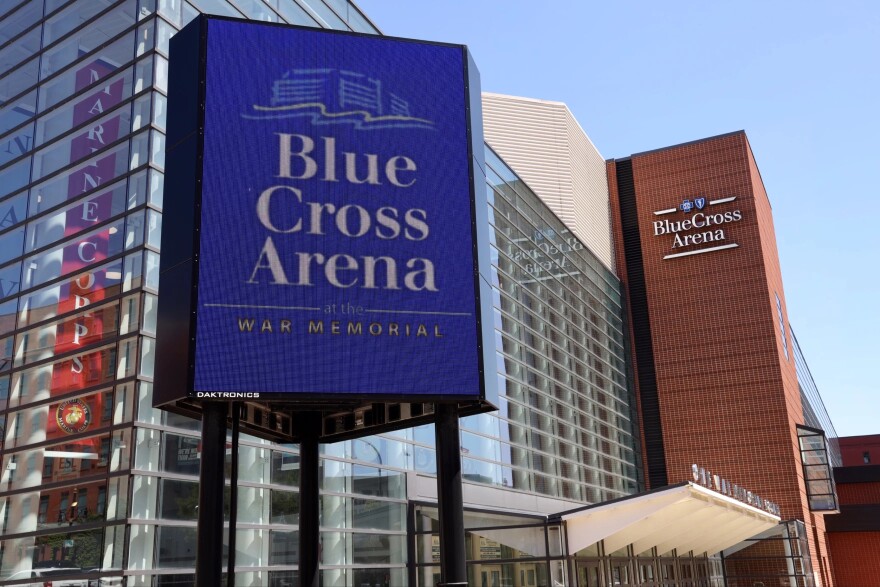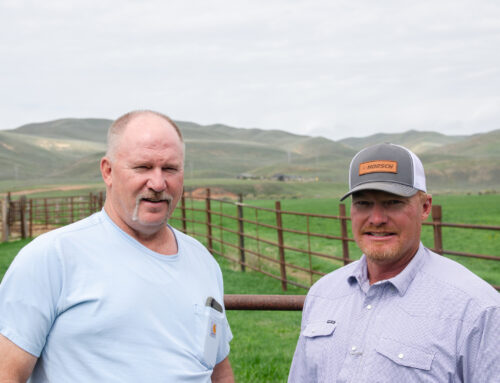Erosion of solar incentives could upend major Rochester projects. But homeowner interest i
June 1, 2025
Solar panels could soon help power Blue Cross Arena, the downtown convention center and the city’s Public Safety Building.
Or not.
A possible rollback of federal incentives for solar and other clean energy technologies threatens to derail the project before it starts. Such action also would undercut other major investments, including GreenSpark Solar’s plan to build a new 4½-story headquarters north of downtown.
“We’re going to need a home, and I intend for it to be that building,” GreenSpark CEO Kevin Schulte said. “I don’t know when the time will be to pull the plug or not.”

Fortified, GreenSpark Solar
/
City of Rochester
Recent action, or inaction, at the federal and state level has clouded the future of the growing industry – spurred on by government incentives encouraging investment by consumers and providers alike.
President Donald Trump and his administration have sought to undo much of his predecessor’s clean energy agenda. Trump has mocked solar farms as “ridiculous.” And a House spending bill approved last month would rapidly phase out tax credits for solar, wind and electric vehicles.
The solar credits allow businesses to deduct 30% of new system costs from their federal taxes.
“I think that this version of the bill is worse than what people had anticipated,” said Anne Spaulding, the city’s manager of environmental quality.
Schulte called it “worse than my worst-case scenario.”
The deadline for companies to respond to the city’s request for rooftop solar proposals is Friday.
Plans are for a chosen company “to finance, design, install, own, maintain and operate rooftop solar” on the three downtown buildings, and possibly the terminal building at the Port of Rochester in Charlotte. The city would commit to buying all of the electricity that is generated.

Max Schulte
“We don’t know … what the developers are, how they’re going to react, and what type of proposals we’re going to receive,” Spaulding said. “So we’ll just have to wait and see.”
There had been an expectation that Biden-era clean energy incentives would be cut ever since the November election.
Solar, wind and battery storage accounted for 93% of new energy that came online last year, according to The American Clean Power Association. The threat of losing those benefits has led to a surge in business as homeowners and others rush to do installations and claim the federal tax credits – which can translate to a $8,000 to $9,000 savings for a typical homeowner.
“We’ve actually beat our residential solar sales goals for the year so far, and we have a lot of interest in our commercial business as well,” said Schulte, who is booked into the fall. “But, you know, when we go into 2026, the forecast is just going to be different.”
The House bill would eliminate tax credits for residential rooftop solar and battery storage at the end of 2025. Most larger projects would need to start construction within 60 days of the enactment of the bill, and be put in service by Dec. 31, 2028.
Many, including Schulte, had looked to New York state to fill the gap.

Fortified, GreenSpark Solar
/
City of Rochester
For starters, solar advocates hoped surplus funds in the NY-Sun program would be used to expand investment. Instead, most of it got reallocated this spring to other energy efficiency measures. And while the newly adopted state budget included a dedicated $1 billion climate action fund – focused on a shift toward electrification – a proposal to expand the residential solar tax credit was left out.
“Are they making it harder to make this kind of investment?” Schulte asked. “Yeah, they sure are.”
Schulte joined other solar advocates last week at the state capitol building in Albany to rally support for what’s called the ASAP act – or Accelerate Solar for Affordable Power. It’s a bill that would redouble the state’s support for growing solar capacity across New York.
“This is a go-big-or-go-home moment,” said Noah Ginsburg, executive director with the New York Solar Energy Industries Association, a trade group representing the state’s rooftop and community solar industry. “We need the New York state Legislature to go big.”
All this unfolded in roughly a month’s time – as Schulte moved his employees and equipment from Ontario, Wayne County, into temporary space in downtown Rochester, anticipating the new headquarters. And the city put out its request for rooftop solar proposals.
The city buildings were chosen for the large open roof spaces unobstructed by tree cover. Each has high electricity usage, and “they’re very visible,” Spaulding said.
“So it’s kind of a visible statement of our commitment to sustainability in the city,” she said.
The city’s project outline emphasizes that point, stating that beyond expected taxpayer savings from reduced electricity costs, the hope is to “encourage other municipalities, commercial entities, non-profit organizations, and residents to consider installing solar.”
To further that effort, and “to enhance public education,” the city document states, “each facility with rooftop solar installed must have a display describing the project and showing in real time the quantity of renewable energy generated by the solar system and the associated impacts of that generation.”

Fortified, GreenSpark Solar
/
City of Rochester
An increasing number of communities and government agencies have been installing solar panels on public buildings. Louisville, Kentucky, placed panels on a fire station, branch library and community center last year. San Antonio, Texas, is working on solar installations at 42 sites, including rooftop and parking facilities.
The city of Rochester has two small-sized rooftop solar systems, one on the Arnett branch library and the other at the Public Market. A third is planned for the future Maplewood Nature Center. And, back in 2017, the city installed a 2-megawatt solar field on the former Emerson Street landfill, helping to power City Hall and the city’s operations center on Mt. Read Boulevard.
When it comes to the city’s latest and largest rooftop project, GreenSpark’s Schulte said, “we have every intention of winning the bid to put up those projects.”
“Becoming unoptimistic is not going to be my strong suit as a business leader. If I end up being Captain Ahab and going down with the ship, I will,” he said.
“The reality for us is the Earth is still baking. The grid still has constraints. We still have work to do, and we will find a way to do it – whether the government of the state of New York or the federal government support us or not.”
Includes reporting by Albany bureau reporter Jeongyoon Han.
Search
RECENT PRESS RELEASES
Related Post



